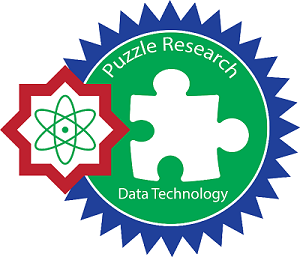ADDITIONAL MENU
Performance Evaluation of Machine Learning Models for Predicting Household Energy Consumption: A Comparative Study
Abstract
Accurate prediction of household energy consumption is critical for improving energy efficiency and optimizing resource allocation in smart grids. This study evaluates the performance of several machine learning regression models, including Linear Regression, Ridge Regression, Lasso Regression, Random Forest, Gradient Boosting, XGBoost, CatBoost, and LightGBM, for predicting daily household energy consumption. The models were trained and tested on time series data, and their performance was measured using four key metrics: Mean Squared Error (MSE), Root Mean Squared Error (RMSE), Mean Absolute Error (MAE), and R². Results show that non-linear models, especially ensemble-based methods such as Random Forest and CatBoost, outperformed traditional linear regression models. Random Forest achieved the lowest MAE (0.1682) and competitive RMSE (0.2450), making it the best overall model. CatBoost, with its advanced gradient boosting algorithm, also demonstrated superior predictive accuracy, achieving an RMSE of 0.2421 and an MAE of 0.1830. In contrast, linear models struggled to capture the complex patterns in the data, with Linear Regression showing the worst performance. The negative R² scores across all models indicate challenges in explaining the variance in the dataset, which may be attributed to external factors or noise not captured by the models. This study highlights the importance of choosing appropriate machine learning models for time series forecasting and recommends further exploration of deep learning models and external features to improve prediction accuracy.
Keywords
Energy Consumption Prediction; Ensemble Methods; Machine Learning; Regression Models; Time Series Forecasting
Full Text:
PDFReferences
S. K. Rathor and D. Saxena, “Energy management system for smart grid: An overview and key issues,” Int. J. Energy Res., vol. 44, no. 6, pp. 4067–4109, 2020.
M. S. Aliero, K. N. Qureshi, M. F. Pasha, and G. Jeon, “Smart Home Energy Management Systems in Internet of Things networks for green cities demands and services,” Environ. Technol. & Innov., vol. 22, p. 101443, 2021.
J. Leitao, P. Gil, B. Ribeiro, and A. Cardoso, “A survey on home energy management,” IEEE Access, vol. 8, pp. 5699–5722, 2020.
A. Raza, L. Jingzhao, Y. Ghadi, M. Adnan, and M. Ali, “Smart home energy management systems: Research challenges and survey,” Alexandria Eng. J., vol. 92, pp. 117–170, 2024.
U. Mir, U. Abbasi, T. Mir, S. Kanwal, and S. Alamri, “Energy management in smart buildings and homes: current approaches, a hypothetical solution, and open issues and challenges,” IEEE Access, vol. 9, pp. 94132–94148, 2021.
S. Mohseni, A. C. Brent, S. Kelly, and W. N. Browne, “Demand response-integrated investment and operational planning of renewable and sustainable energy systems considering forecast uncertainties: A systematic review,” Renew. Sustain. Energy Rev., vol. 158, p. 112095, 2022.
C. Ntakolia, A. Anagnostis, S. Moustakidis, and N. Karcanias, “Machine learning applied on the district heating and cooling sector: A review,” Energy Syst., vol. 13, no. 1, pp. 1–30, 2022.
A. A. A. Gassar and S. H. Cha, “Energy prediction techniques for large-scale buildings towards a sustainable built environment: A review,” Energy Build., vol. 224, p. 110238, 2020.
M. M. Hussain, R. Akram, Z. A. Memon, M. H. Nazir, W. Javed, and M. Siddique, “Demand side management techniques for home energy management systems for smart cities,” Sustainability, vol. 13, no. 21, p. 11740, 2021.
N. C. Iraganaboina and N. Eluru, “An examination of factors affecting residential energy consumption using a multiple discrete continuous approach,” Energy Build., vol. 240, p. 110934, 2021.
S. F. Ahmed et al., “Deep learning modelling techniques: current progress, applications, advantages, and challenges,” Artif. Intell. Rev., vol. 56, no. 11, pp. 13521–13617, 2023.
T. Ahmad, H. Zhang, and B. Yan, “A review on renewable energy and electricity requirement forecasting models for smart grid and buildings,” Sustain. Cities Soc., vol. 55, p. 102052, 2020.
N. Mlilo, J. Brown, and T. Ahfock, “Impact of intermittent renewable energy generation penetration on the power system networks--A review,” Technol. Econ. Smart Grids Sustain. Energy, vol. 6, no. 1, p. 25, 2021.
S. Ben Atitallah, M. Driss, W. Boulila, and H. Ben Ghézala, “Leveraging Deep Learning and IoT big data analytics to support the smart cities development: Review and future directions,” Comput. Sci. Rev., vol. 38, p. 100303, 2020.
T. Alam and A. AlArjani, “A Comparative Study of CO2 Emission Forecasting in the Gulf Countries Using Autoregressive Integrated Moving Average, Artificial Neural Network, and Holt-Winters Exponential Smoothing Models,” Adv. Meteorol., vol. 2021, no. 1, p. 8322590, 2021.
E. T. Winn-Nuñez, M. Griffin, and L. Crawford, “A simple approach for local and global variable importance in nonlinear regression models,” Comput. Stat. & Data Anal., vol. 194, p. 107914, 2024.
I. K. Ofori, C. K. Obeng, and S. A. Asongu, “What really drives economic growth in sub-Saharan Africa? Evidence from the lasso regularization and inferential techniques,” J. Knowl. Econ., vol. 15, no. 1, pp. 144–179, 2024.
W. Zhang, C. Wu, H. Zhong, Y. Li, and L. Wang, “Prediction of undrained shear strength using extreme gradient boosting and random forest based on Bayesian optimization,” Geosci. Front., vol. 12, no. 1, pp. 469–477, 2021.
S. Hanifi, X. Liu, Z. Lin, and S. Lotfian, “A critical review of wind power forecasting methods—past, present and future,” Energies, vol. 13, no. 15, p. 3764, 2020.
A. Asselman, M. Khaldi, and S. Aammou, “Enhancing the prediction of student performance based on the machine learning XGBoost algorithm,” Interact. Learn. Environ., vol. 31, no. 6, pp. 3360–3379, 2023.
J. T. Hancock and T. M. Khoshgoftaar, “CatBoost for big data: an interdisciplinary review,” J. big data, vol. 7, no. 1, p. 94, 2020.
C. Sweeney, R. J. Bessa, J. Browell, and P. Pinson, “The future of forecasting for renewable energy,” Wiley Interdiscip. Rev. Energy Environ., vol. 9, no. 2, p. e365, 2020.
J. Zheng, J. Du, B. Wang, J. J. Klemeš, Q. Liao, and Y. Liang, “A hybrid framework for forecasting power generation of multiple renewable energy sources,” Renew. Sustain. Energy Rev., vol. 172, p. 113046, 2023.
O. Erixno, N. Abd Rahim, F. Ramadhani, and N. N. Adzman, “Energy management of renewable energy-based combined heat and power systems: A review,” Sustain. Energy Technol. Assessments, vol. 51, p. 101944, 2022.
M. Khalil, A. S. McGough, Z. Pourmirza, M. Pazhoohesh, and S. Walker, “Machine Learning, Deep Learning and Statistical Analysis for forecasting building energy consumption—A systematic review,” Eng. Appl. Artif. Intell., vol. 115, p. 105287, 2022.
H. Yesilyurt, Y. Dokuz, and A. S. Dokuz, “Data-Driven Energy Consumption Prediction of a University Office Building using Machine Learning Algorithms,” Energy, p. 133242, 2024.
L. Zhang and D. Jánoš’ik, “Enhanced short-term load forecasting with hybrid machine learning models: CatBoost and XGBoost approaches,” Expert Syst. Appl., vol. 241, p. 122686, 2024.
Y. Liang, S. Li, C. Yan, M. Li, and C. Jiang, “Explaining the black-box model: A survey of local interpretation methods for deep neural networks,” Neurocomputing, vol. 419, pp. 168–182, 2021.
T. V. Singh, “Smart Home Dataset with Weather Information.” 2021.
DOI: http://dx.doi.org/10.24014/ijaidm.v8i1.32791
Refbacks
- There are currently no refbacks.
Office and Secretariat:
Big Data Research Centre
Puzzle Research Data Technology (Predatech)
Laboratory Building 1st Floor of Faculty of Science and Technology
UIN Sultan Syarif Kasim Riau
Jl. HR. Soebrantas KM. 18.5 No. 155 Pekanbaru Riau – 28293
Website: http://predatech.uin-suska.ac.id/ijaidm
Email: ijaidm@uin-suska.ac.id
e-Journal: http://ejournal.uin-suska.ac.id/index.php/ijaidm
Phone: 085275359942
Journal Indexing:
Google Scholar | ROAD | PKP Index | BASE | ESJI | General Impact Factor | Garuda | Moraref | One Search | Cite Factor | Crossref | WorldCat | Neliti | SINTA | Dimensions | ICI Index Copernicus
IJAIDM Stats










